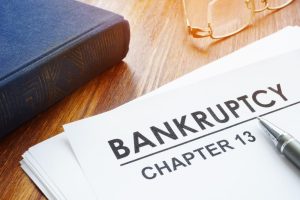 Bankruptcy is a legal process an entity may use to seek relief from debt. It is a legal way to start with a clean financial slate. No businessperson or entrepreneur starts a business with the intention of filing for bankruptcy.
Bankruptcy is a legal process an entity may use to seek relief from debt. It is a legal way to start with a clean financial slate. No businessperson or entrepreneur starts a business with the intention of filing for bankruptcy.
Unfortunately, financial challenges do happen. Bankruptcy provides a legal way out of overwhelming debt. The law allows for six different types of bankruptcy.
Four of these can potentially be used by businesses, depending on the type of business. The fifth is used by municipalities, and the sixth is a legal means of dealing with bankruptcy that involves more than one country. When a business is in financial trouble, it’s essential the owner chooses the best bankruptcy option to protect its future.
When you work with an experienced business bankruptcy attorney, they can advise you on your best choices based on your circumstances. They also help the process run more smoothly and can address any issues that might affect your personal assets.
Chapter 7 Bankruptcy: Business Liquidation
One of the most common types of bankruptcy filed is Chapter 7, sometimes called a liquidation bankruptcy. If the business has no viable future, this may be the best choice. Under Chapter 7 bankruptcy, a trustee is appointed to take possession of the assets, sell them, and distribute the funds among the creditors.
Once the assets are distributed, the owner of the business may be released from other obligations if it is a sole proprietorship. Partnerships and corporations operate under other regulations. This form of bankruptcy may also be appropriate if the business does not own any substantial assets.
If Chapter 7 is appropriate, the applicant might be required to undergo a “means” test. The business income must be under a certain level to be approved.
When the Chapter 7 bankruptcy case concludes, the business is usually dissolved. While the owners can start another business, they generally cannot continue this one.
Chapter 11 Bankruptcy: Business Restructure
If a business has a viable chance of returning to financial stability, Chapter 11 business bankruptcy may be a better choice. Chapter 11 is often reserved for partnerships and corporations. However, it can also be used by sole proprietorships when the income level qualifies.
Chapter 11 business bankruptcy is a means of restructuring debt, so creditors are paid. By creating a repayment plan, the business can keep the business assets and continue to operate.
After filing Chapter 11, the company files a plan of reorganization. The bankruptcy allows the company to terminate contracts and leases, pay back a portion of the debt, discharge qualifying debt, and recover assets.
The plan must be presented to the creditors, who will vote on it. Then the court must find the plan fair and equitable. Because of the complexity of Chapter 11 business bankruptcies, it can take over a year to confirm a plan and put it into action.
Chapter 12 Bankruptcy: Restructure Farms and Fisheries
Chapter 12 business bankruptcy is designed for two specific types of businesses, family farmers or family fishermen, who get a regular income from their business. This bankruptcy law was tailored to meet the realities of farming and fishing.
The laws under chapter 12 bankruptcy are less complex and more streamlined. It eliminates some of the barriers when the farmer or fisherman wants to restructure their business. However, only family farmers or fishermen with “regular annual income” can file for relief under Chapter 12.
Chapter 13 Bankruptcy: Sole Proprietorship Restructure
 In most cases, Chapter 13 Bankruptcy is reserved for individuals. However, sole proprietorships can file for business bankruptcy under Chapter 13. Chapter 13 is similar to Chapter 11 in that it reorganizes the debt of the sole proprietorship.
In most cases, Chapter 13 Bankruptcy is reserved for individuals. However, sole proprietorships can file for business bankruptcy under Chapter 13. Chapter 13 is similar to Chapter 11 in that it reorganizes the debt of the sole proprietorship.
It is reserved for sole proprietorships that have a chance of being viable again. This reorganization can be used for sole proprietorships because the business structure is indistinguishable from the owner. This is sometimes called a “wage earner plan.”
The amount that you repay in the reorganization will depend on your income level. Other factors include how much property you own and how much money you owe.
Sole proprietorships often include personal assets as part of the business assets. By using Chapter 13 bankruptcy instead of Chapter 7, a sole proprietor may avoid losing their house in the reorganization and restructuring of the debt.
Choose Bradford Law Offices for Help with Debt Relief
Business bankruptcy laws are in place to help businesses that have found themselves in challenging financial circumstances. For over 25 years, Bradford Law Offices has helped clients in North Carolina resolve their finance-related legal matters.
If you’ve been dealing with the stress of keeping your business afloat while managing your debt, you are not alone. Call our Raleigh business bankruptcy lawyer today at (919) 758-8879 or contact us online for a confidential consultation.
Our team will listen to the details of your case and offer you the best option to move forward toward financial stability. Call us today to find out how business bankruptcy can help relieve your burden.